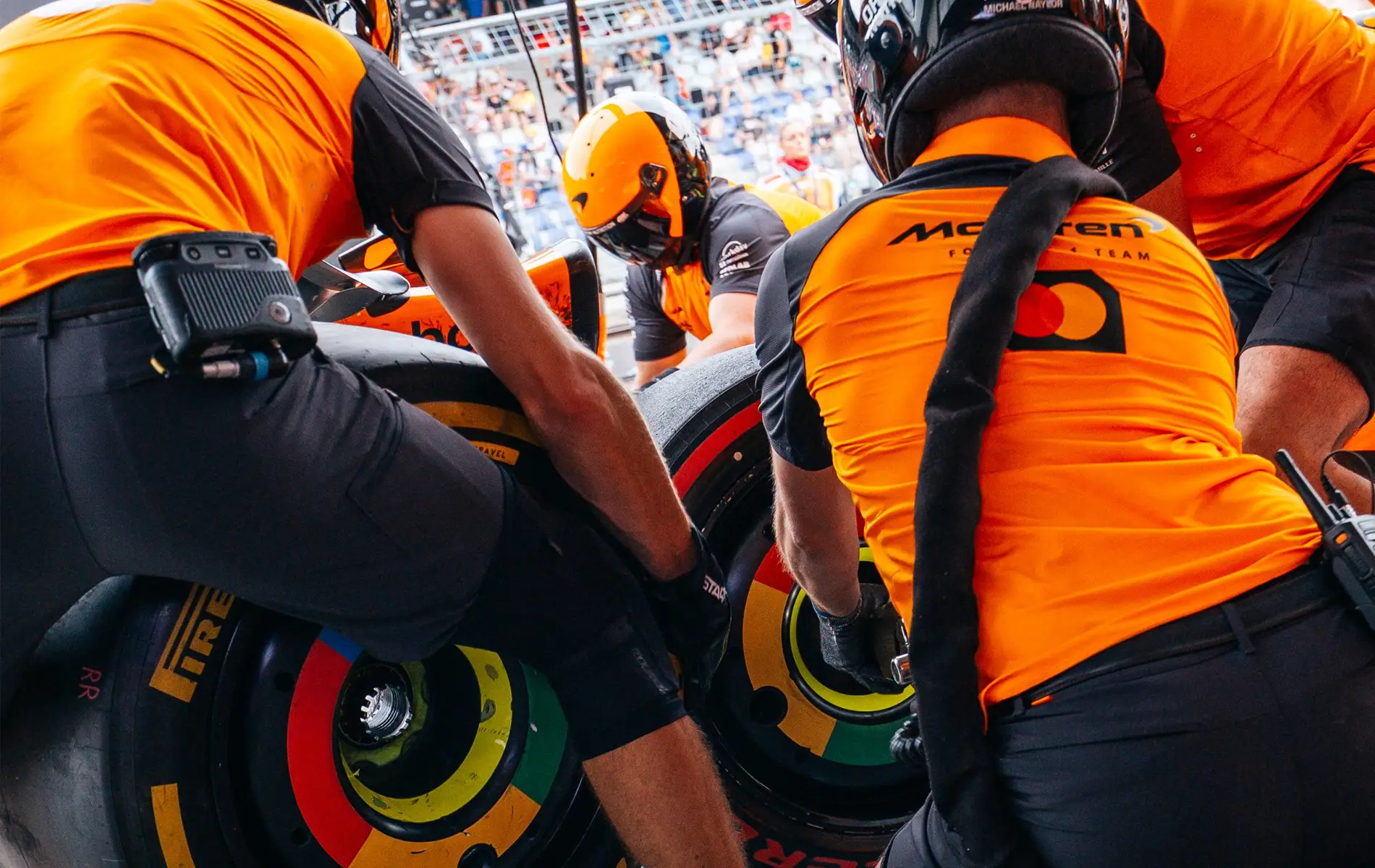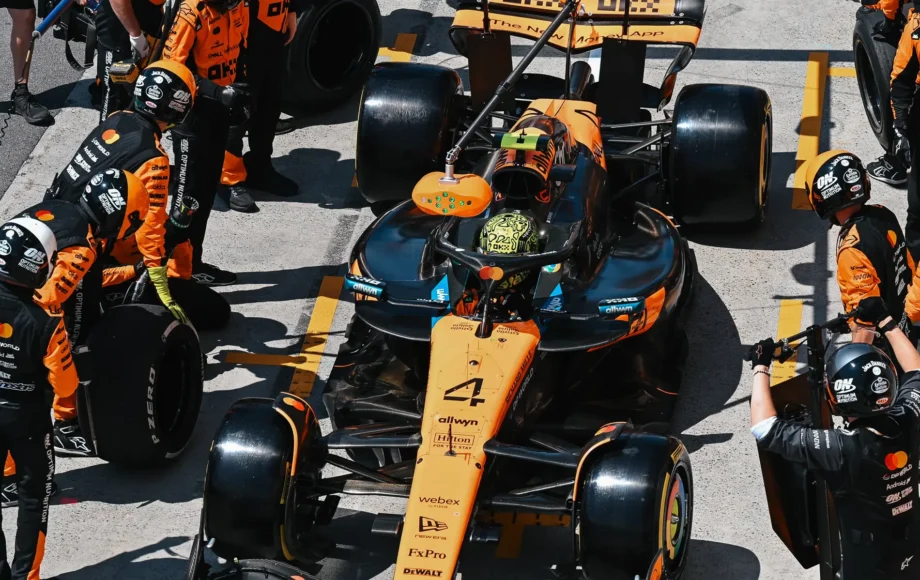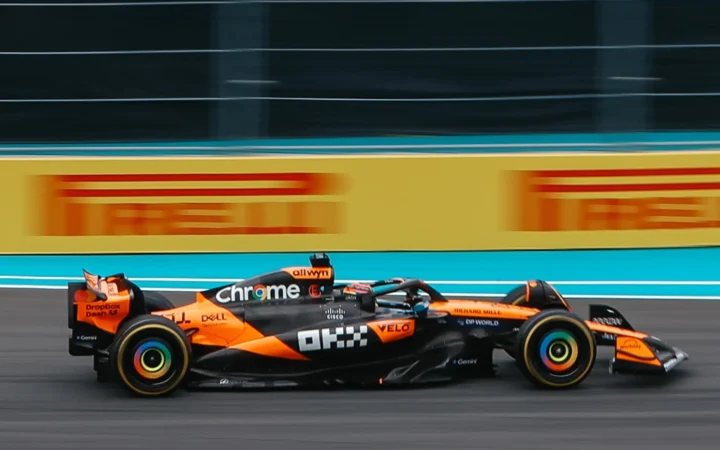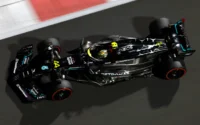In the glitz and glamour of Formula 1, the spotlight often shines brightest on the drivers and team principals. But at the heart of every Grand Prix weekend, there’s an army of unsung heroes—mechanics and pit crew members—working with lightning precision under immense pressure. As Formula 1 evolves into a multi-billion dollar global sport, one question often gets asked: How much do F1 pit crew members actually earn?
What To Know?
- F1 pit crew salaries range from $30,000 to $1 million annually, based on role and experience.
- Bonuses can add tens of thousands per season for crew members on winning teams.
- Precision roles like tyre changers earn $350K+ and work under extreme pressure in pit stops under 2 seconds.
This in-depth guide examines the financial realities of F1 pit crews, drawing on verified data and insights from pit lane veterans. From the six-figure salaries of tyre changers to the pivotal role of the $1 million-a-year crew chief, we break down what it takes—and what it pays—to work behind the scenes in the world’s fastest sport.
Average salary figures and bonus estimates for each Formula One pit crew member
F1 pit crew salaries vary significantly depending on the individual’s responsibility, expertise, and experience, as well as the team. For instance, giants of the sport, such as Ferrari or Mercedes, often have more substantial budgets than those on much tighter budgets, like Haas. However, the budget cap has evened the playing field in recent years.
While some roles are physically demanding and highly technical, others are supportive yet essential for ensuring safety and compliance with regulations.
Below is a table outlining average pay and bonuses for each role within an F1 pit crew:
| Pit Crew Member | Pay per race | Annual Salary | Race Winning Bonus |
|---|---|---|---|
| Crew Chief | $10,000 | $1 million | $5,000 |
| Refueling Person | $5,000 | $350,000 | $2,500 |
| Tyre Changers | $5,000 | $350,000 | $2,500 |
| Tyre Carriers | $3,500 | $270,000 | $2,500 |
| Jack Men | $3,000 | $150,000 | $500 |
| Wing Men | $3,000 | $150,000 | $500 |
| Stabiliser | $2,500 | $90,000 | $250 |
| Starter Man | $750 | $40,000 | $250 |
| Fire Extinguisher Man | $500 | $30,000 | $250 |
Crew Chiefs
At the top of the list is the Crew Chief, earning an impressive $1 million annually. Responsible for overseeing every aspect of the pit stop—including strategy, safety, tyre selection, and communication with the driver—the crew chief carries enormous pressure. A single decision could make or break a race.
Crew chiefs are seasoned veterans, often with years of experience in mechanical engineering and motorsports. Their split-second calls can win titles or result in a costly DNF (Did Not Finish).
What These Salaries Reflect
A pit stop may last only 2.5 seconds—or as fast as 1.80 seconds, the current world record held by McLaren during the 2023 Qatar Grand Prix (as of writing on 21 July 2025). But those few seconds are the result of thousands of hours of training, testing, and teamwork.
Each crew member’s salary is not just compensation for performance under pressure, but for full-time, year-round commitment. F1 teams typically employ three complete pit crews (Race Crews 1, 2, and 3), rotating personnel based on travel, strategy, and fatigue management. This reflects the gruelling nature of a 24-race season across five continents.

Pit Crew Bonuses
Pit crew members earn bonuses for each race win, with payouts distributed by the team based on individual responsibilities. For example, during Max Verstappen’s dominant 2023 season, some Red Bull pit crew members reportedly earned upwards of $114,000 in bonuses for their role in multiple wins.
If a team finishes high in the Constructors’ Championship or wins a string of Grands Prix, end-of-season bonuses can stack up.
Why Do These Jobs Pay So Well?
Formula One is a high-risk, high-reward sport. According to Liberty Media’s financial disclosures, F1 generated over $3.65 billion in revenue in 2024. With cars worth north of $15 million each, guaranteeing a quick and reliable pit stop isn’t just important—it’s crucial to protecting multimillion-dollar assets and reputations.
Formula One History Recommends
That’s why F1 pit crew salaries are proportionate to their responsibility. A tyre not secured properly can lead to crashes or disqualification. A poorly executed wing change can cost a podium. The stakes are incredibly high.
How to Become an F1 Pit Crew Member
Getting into a Formula 1 pit crew is no easy feat. It’s not just about turning wrenches—it’s about elite-level coordination, physical fitness, and the ability to thrive under pressure.
A Step-by-step Path to the Pit Lane:
- Start with Automotive Knowledge
Gain experience in automotive mechanics or engineering. Many crew members have vocational training or university degrees in related fields. - Gain Trackside Experience
Start in junior motorsports categories like Formula 3, Formula 2, or endurance racing series. This builds race-day experience. - Be in Top Physical Shape
F1 pit crews are as much athletes as they are technicians. Tyre changers and jack men, in particular, undergo fitness training to improve speed and endurance. - Network Within the Motorsport World
Teams often recruit internally or through word of mouth. Internships, apprenticeships, and being part of a broader motorsport organisation are key entry points. - Teamwork is Everything
As Mercedes-AMG Chief Mechanic Matt Dean explains, pit stop practice begins early in the year and roles are rotated regularly to ensure flexibility. Cross-training in multiple tasks builds depth across the team.
The Future of F1 Pit Crew Salaries
As Formula One expands into new markets—particularly the United States and Asia—pit crew salaries are expected to rise. The growing presence of events like the Las Vegas Grand Prix and Miami GP reflects a broader commercial strategy by Liberty Media.
Formula One History Recommends
With increased revenue from broadcasting rights, sponsorship, and global audience growth, teams are more capable than ever of investing in elite personnel behind the scenes. Pit crews are likely to benefit from:
- Bigger win bonuses
- More travel stipends
- Improved facilities and training budgets
- Specialist roles commanding higher pay
The modern F1 pit crew member is no longer “just a mechanic.” They’re engineers, data specialists, logistics experts—and sometimes even ex-athletes—in a finely tuned machine.
F1 Pit Crew Members FAQ
What is the lowest-paid job on an F1 pit crew?
The fire extinguisher man earns the lowest base salary—$30,000 per year, or $500 per race. Despite the role seeming simple, it’s important for race safety, especially in high-risk situations involving fuel or collisions. They still qualify for win bonuses of $250 per race.
Is working as an F1 pit crew a full-time job?
Absolutely. F1 pit crew members are full-time employees. Between races, they are involved in equipment maintenance, logistics planning, simulation drills, and car preparation. Add to that the extensive travel schedule, and you have a job that demands year-round commitment.
How much do tyre changers make in Formula 1?
Tyre changers earn around $350,000 per year, with $5,000 per race and a $2,500 bonus for every race win. They’re among the best-paid non-lead roles due to the technical speed and physicality required.
What’s the fastest pit stop ever?
The current fastest recorded F1 pit stop was 1.80 seconds, achieved by McLaren Racing at the 2023 Qatar Grand Prix. Red Bull previously held the record with a 1.82-second stop in Brazil in 2019. In December 2023, Red Bull also executed a 2.84-second pit stop in complete darkness, setting a new kind of record in the “Pitch Black Pit Stop” challenge at F1’s UK headquarters.
Seen in:









